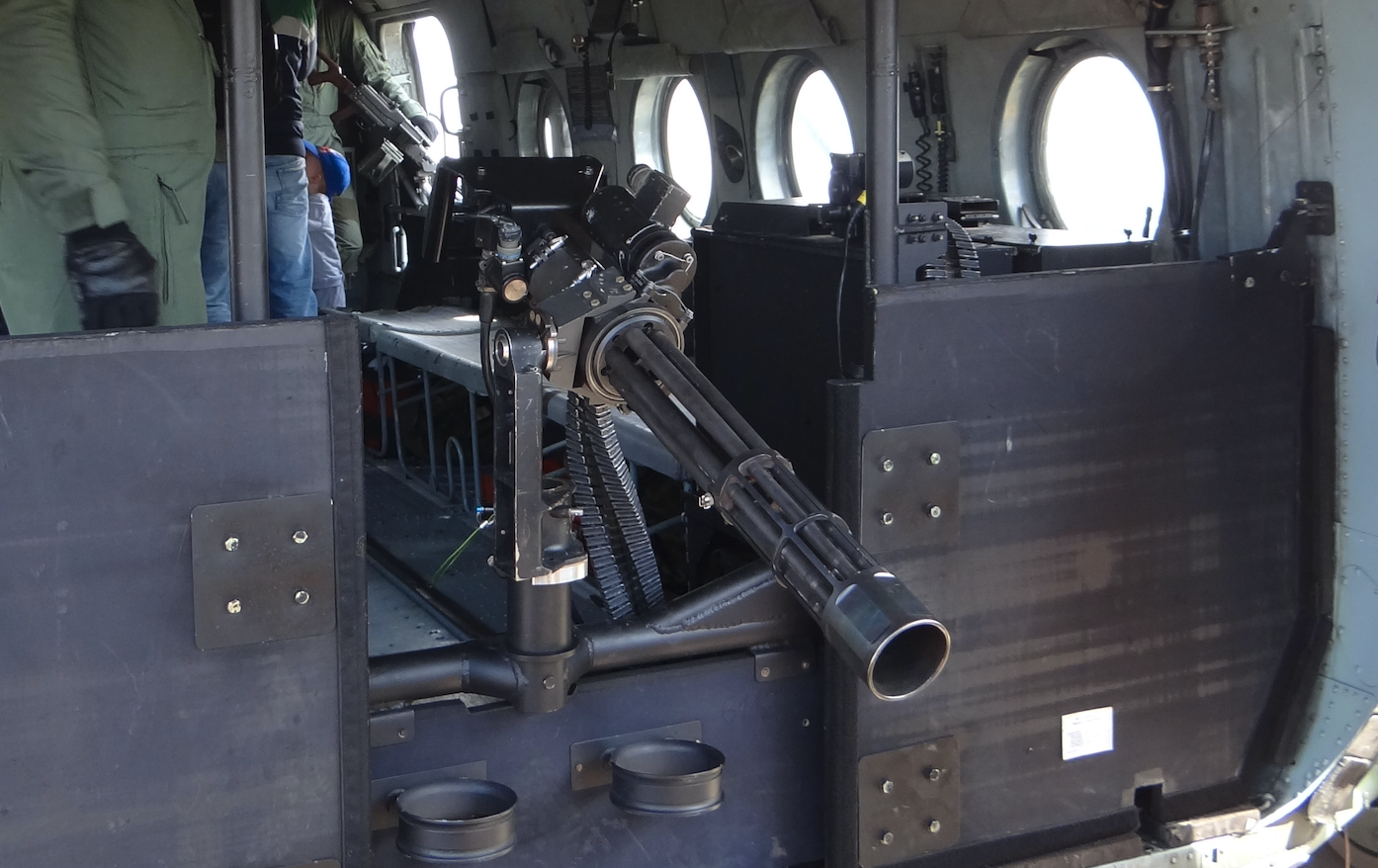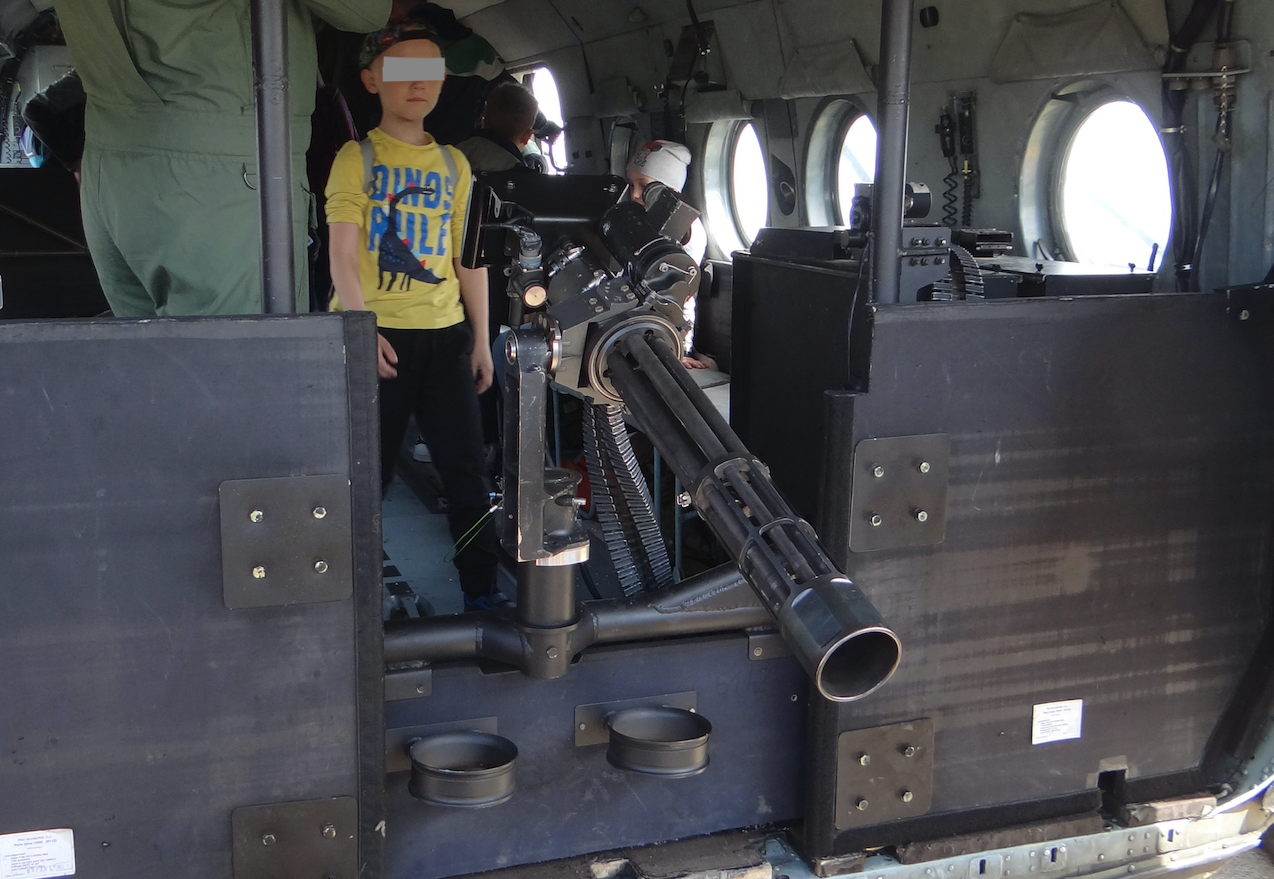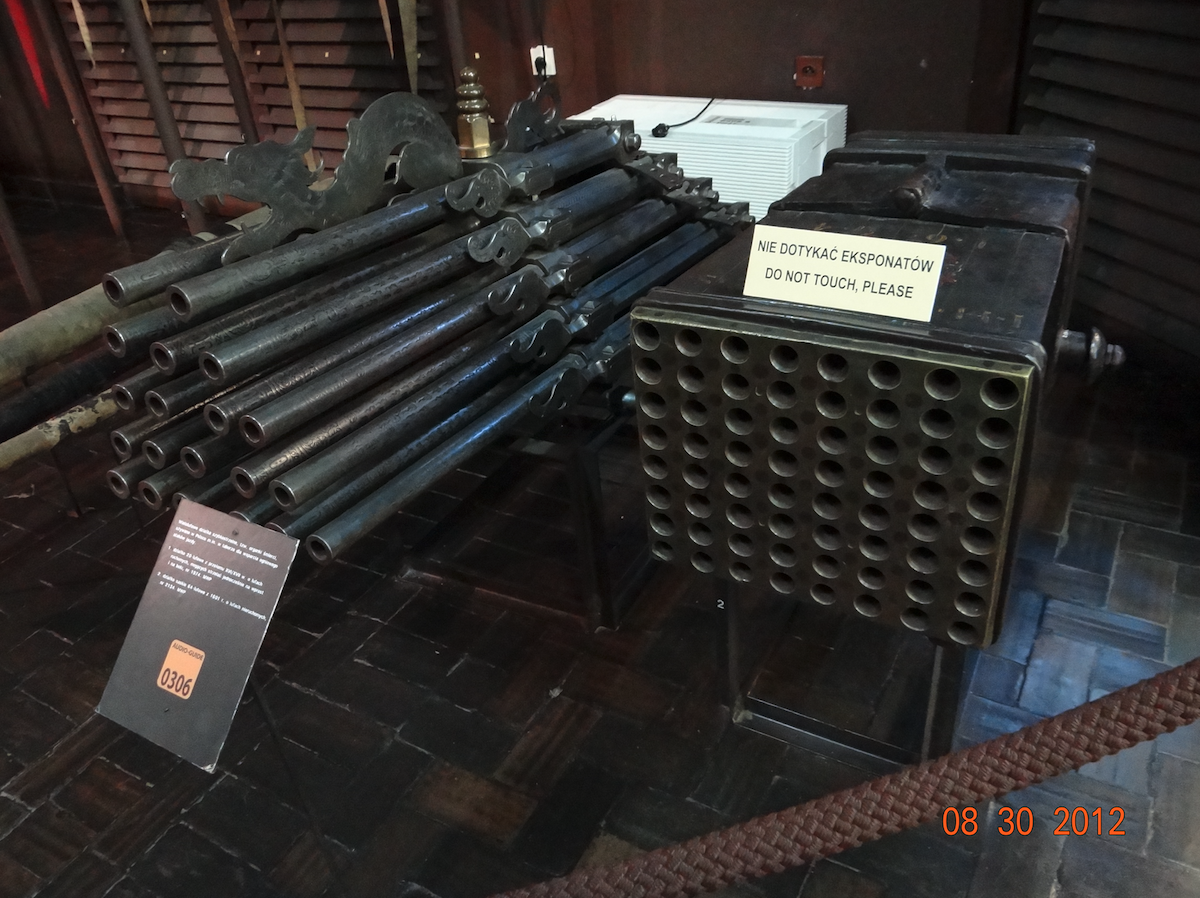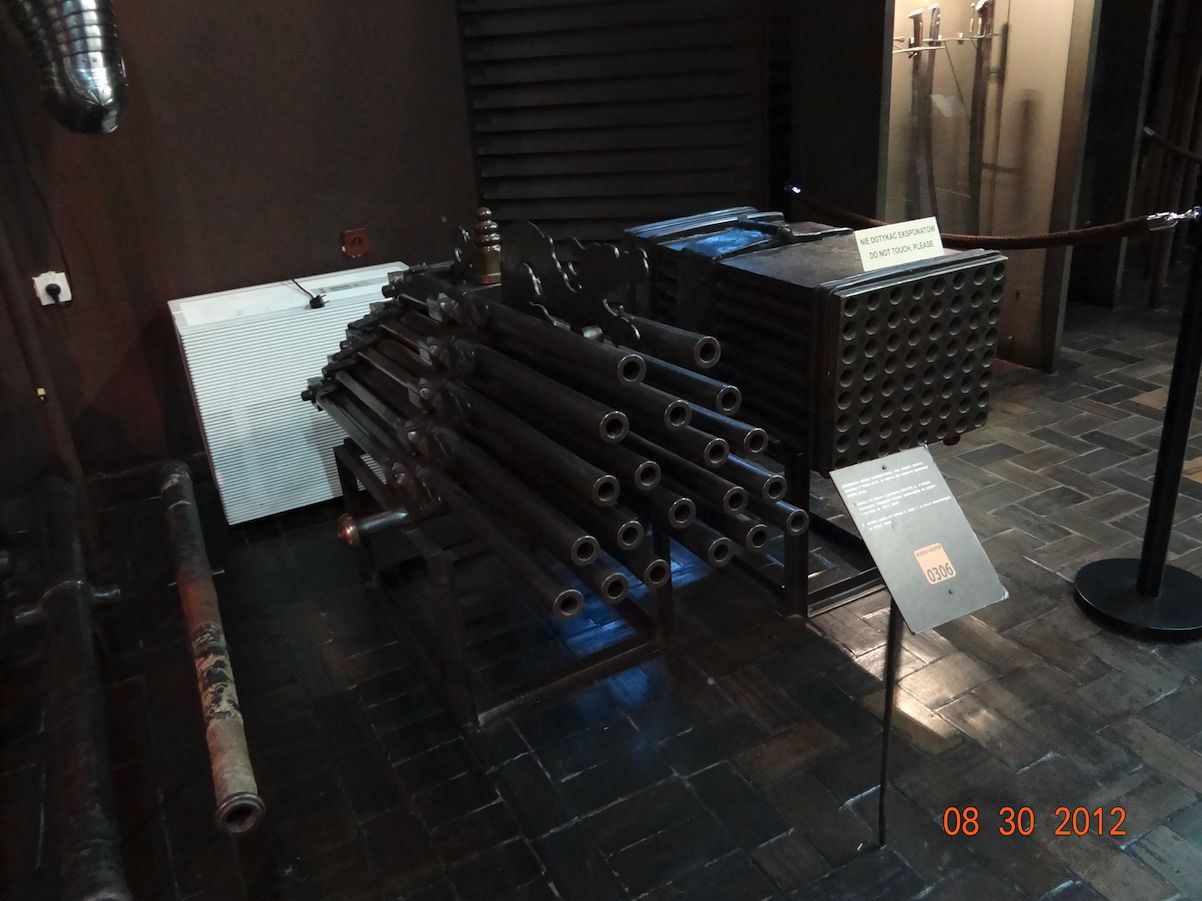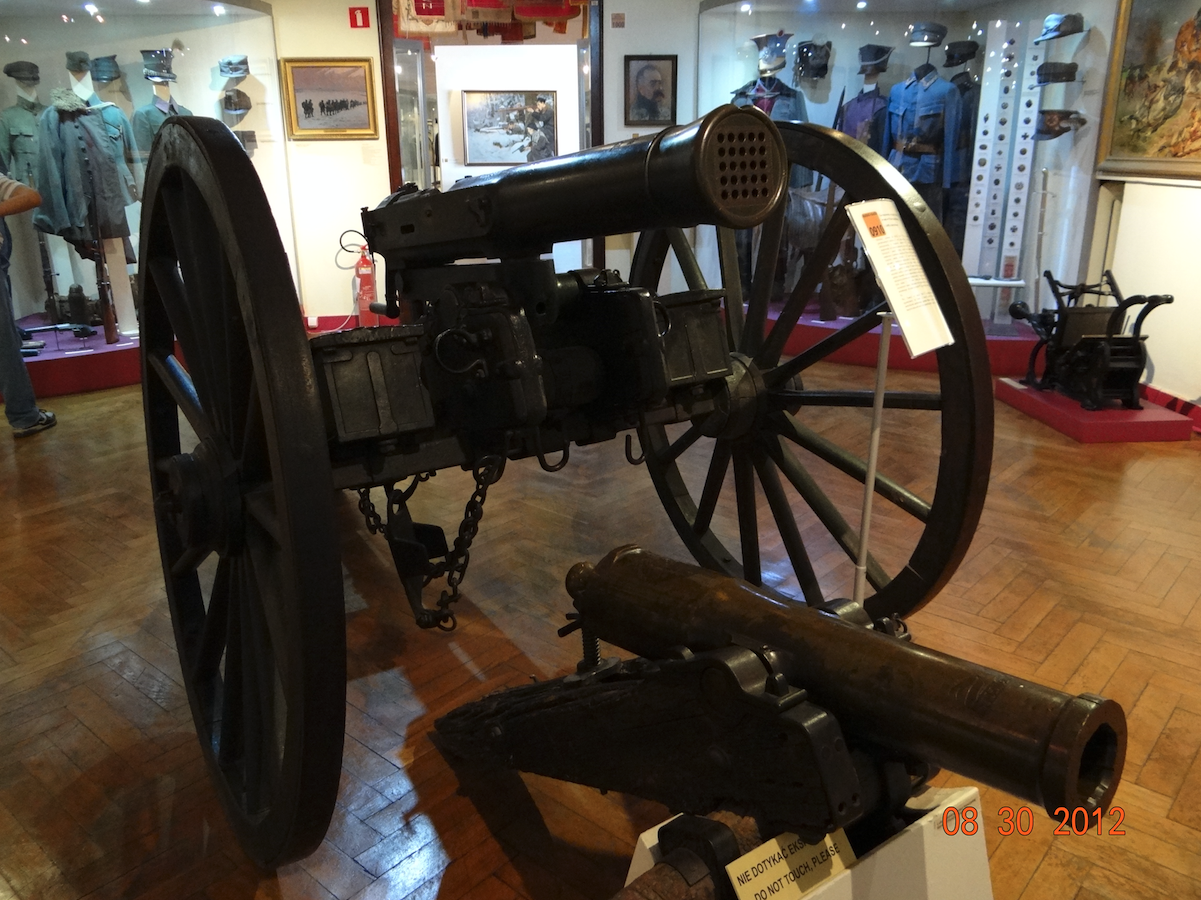Inowrocław 2022-12-15
M-134 Minigun multi-barrel machine gun.
The M-134 Minigun machine gun is a multi-barrel powered rifle developed in the Gatling system. It is used as armament of light and medium military vehicles, helicopters and in barrage defense positions. Its advantage is the high rate of fire, which reaches 6,000 shots per minute, which is related to the use of several barrels. The rifle is usually 6-barreled.
The M-134 Minigun machine gun was developed by the General Electric concern and has been produced since 1962, in various variants, until now (2022). The basic version fires standard 7.62mm x 51mm NATO ammunition or also standard 5.56mm x 45mm NATO ammunition. The rifle has the ability to choose one of two firing speeds: 2,000 or 4,000 shots per minute. The rifle is fed with belt-fed ammunition. The ammunition supply depends on the magazine used, which can contain up to 4,000 rounds.
History.
In 1861, engineer Richard Gatling built a firearm, which was called the Gatling Gun. The fire from it was guided by manual drive, not automatic. This weapon allowed to fire many rounds in a short time, without the need to pause to reload the weapon. This caused the Gatling Grafter to replace all previously used grubbers.
The idea of this weapon was already known in the 18th century. A few or a dozen or so barrels placed next to each other, which were fired successively. They were supposed to provide barrage fire. The technology of the time stood in the way, because the barrels were loaded from the side of the muzzle. A milestone was the development of combined cartridges, where the propellant and the projectile are in one element. The combined bullet allowed for loading from the side of the trigger lock mechanism.
Engineer Richard Gatling used the creation of a cartridge fused with a metal case. He developed a system of combined barrels placed in a rotating drum. In addition, he developed a system for feeding bullets into the receiver, firing them and getting rid of the shells. The drive was manual, through a crank operated by one of the soldiers. The second soldier steered the rifle, matching the sights with the target. Another soldier was feeding a belt of bullets into a rifle. The rifle’s theoretical rate of fire was up to 1,200 rounds per minute. In fact, the rate of fire was 200 rounds per minute.
The basis of the rifle is the handguard. There is a cylinder in which the barrels were mounted. Each barrel has its own lock, cartridge chamber, a system for inserting a cartridge into the chamber, locking, firing pin, unlocking, ejection of the shell from the barrel. During a full rotation of the set of barrels, each of them fires one shot.
When the system of ejection of the shell from the barrel was developed using the recoil of the breech, and then the system of using the energy of the powder gases, the Gatling system became obsolete. The general idea remained.
In addition, a single-barrel automatic rifle was created that can fire either continuous or single fire. This rifle is much lighter than the multi-barreled rifle, and therefore more useful in combat. So the Gatling system went into oblivion for a while.The return to the weapons of the Gatling system took place in the 1950s. The reason was the need for effective on-board weapons for combat aircraft, especially fighters, and for the defense of vessels – ships. The idea was to fire as many shells as possible in a short time, which increases the chance of destroying a target that is only in the firing range for fractions of a second.
This is how the M61 Vulcan cannon was created, equipped with 6-barrels, caliber 20 mm. These 20 mm results from the conducted experiments that one projectile is able to destroy the spar of the aircraft, and thus the aircraft. The cannon is powered by an electric motor. The M61 Vulcan cannon was used by virtually all combat aircraft in the USAF. A version of the 30 mm cannon was created for the A-10 attack aircraft. The M61 Vulcan cannon, despite its simple general construction, is a very precise device. To date, Muscovites have not been able to build a similar weapon. Their greatest achievement is the GSz-23 double-barrel cannon, which works on the principle of using powder gases.
M-134 Minigun machine gun.
The M-134 Minigun machine gun is based on the M61 Vulcan cannon. The M-134 Minigun is propelled. It can be driven by an electric motor, hydraulic system or pneumatic system. The rifle was primarily used by helicopters that fought in Vietnam. The prefix in the name "mini" refers to smaller dimensions and weight.
In 2013, due to the participation of the Polish Army in the war in Iraq and Afghanistan, 10 M134G rifles were purchased. In 2015, additional tests of this armament were carried out. The rifles were mounted in the rear door of the cargo hold of Mil Mi-17 helicopters. Electricity to drive the rifle is taken from the helicopter’s electrical system.
Data T-T machine gun M-134 Minigun:
Weight 18.8 kg. Length 0.801 m. Width with cover 0.559 m. The effective firing range of manpower is 1,200 m.
Written by Karol Placha Hetman

